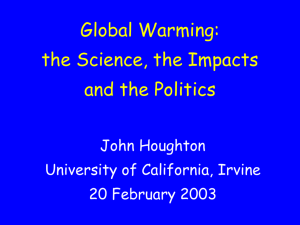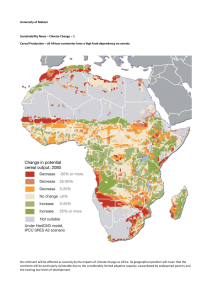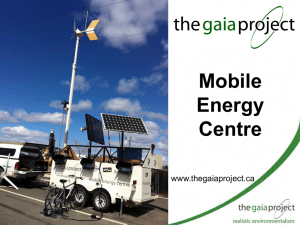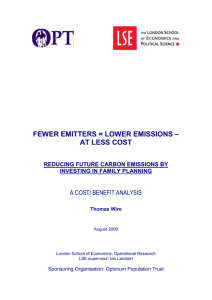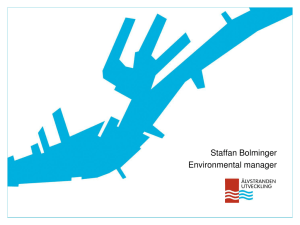Climate Change Predictions _EMG _Steve Law
advertisement
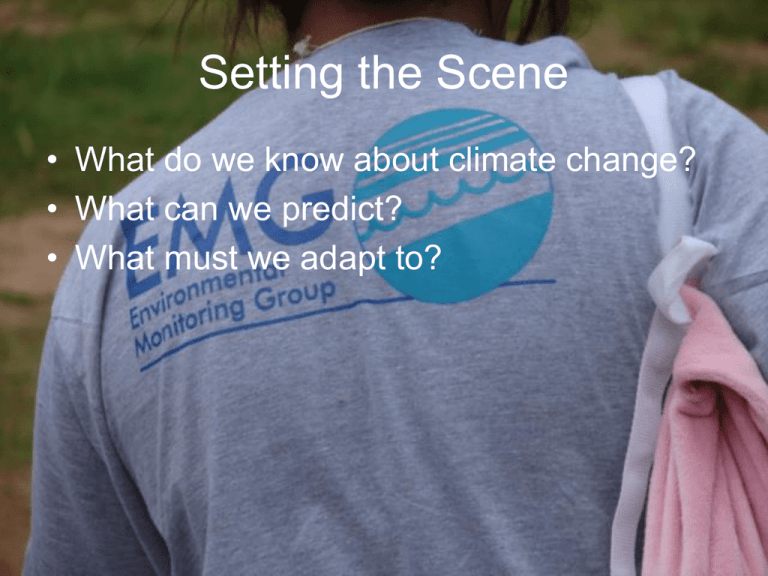
Setting the Scene • What do we know about climate change? • What can we predict? • What must we adapt to? IPCC 2013 Headlines What can we see? • Global warming is unequivocal, as is the evidence of human influence • Surface temperatures are increasing, ice-sheets are melting, sealevel is rising • Each of the last three decades has been successively warmer than any preceding decade since 1850. In the Northern Hemisphere, 1983–2012 was likely the warmest 30-year period of the last 1400 years. • The atmospheric concentrations of carbon dioxide (CO2), methane, and nitrous oxide have increased to levels unprecedented in at least the last 800,000 years. CO2 concentrations have increased by 40% since pre-industrial times, primarily from fossil fuel emissions and secondarily from net land use change emissions. IPCC 2013 Headlines What does this mean? • Global surface temperature change for the end of the 21st century is likely to exceed 1.5°C relative to 1850 to 1900 (most conservative models). • Changes in temperature and rainfall patterns will not be uniform. Generally, wet regions will become wetter and dry regions will become dryer • Global mean sea level will continue to rise • Global warming will exacerbate the increase of CO2 in the atmosphere (positive feedback) • Most climate change impacts will persist for many centuries even if emissions of CO2 are stopped today. What do we know? Fossil fuel use is increasing Atmospheric CO2 levels are increasing Temperatures are increasing Increased global temperature = localised changes in climate patterns (seasons, rainfall, evaporation, wind, etc) Impact on agriculture = major social & economic impacts What can we predict? Proceed with caution!! Projected changes in average seasonal temperature (˚C) by 2036-2065 relative to the 1961-2000 period Projected changes in mean seasonal rainfall (mm) for the period 2036-2065, relative to 1961-2000 Projected change in annual frequency of extreme rainfall events (more than 20mm per day) for the period 2035-2065 relative to the baseline period 1961-2000. Projected change in annual frequency of very hot days (over 35° C) for the period 2035-2065 relative to the baseline period 1961-2000. Downscaling How can climate models help us understand possible changes in local conditions? Implications for adaptation and policy actions Downscaling requires local data Reporting frequency to WMO from World Weather watch stations 1998-2002 What exactly do we need to adapt to? • Models can’t give more than broad probabilities – rainfall, temperature, extreme events….. • …but we can be certain of uncertainty • International processes will not solve your problems! • Building resilience: Social dimension is as important as technical



